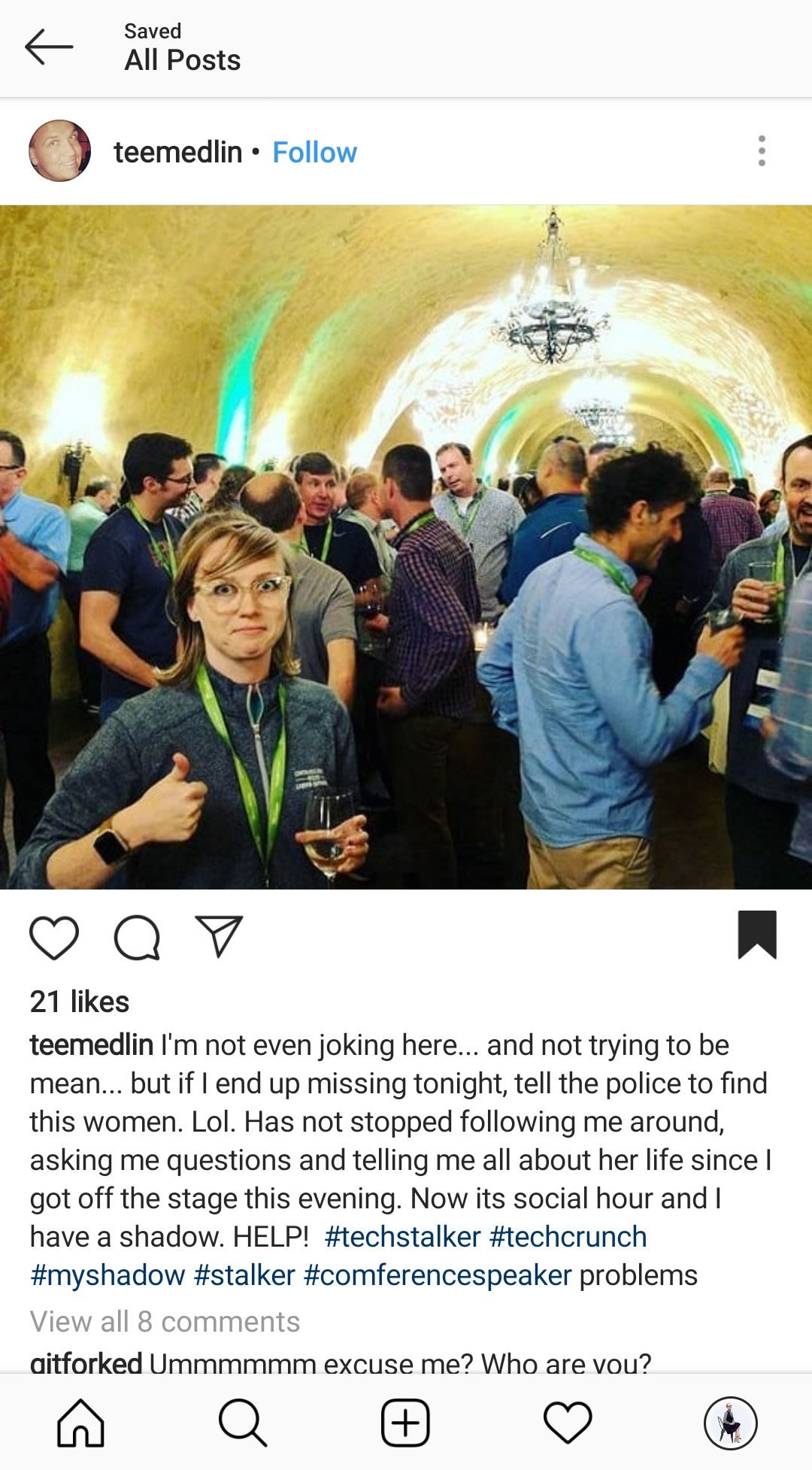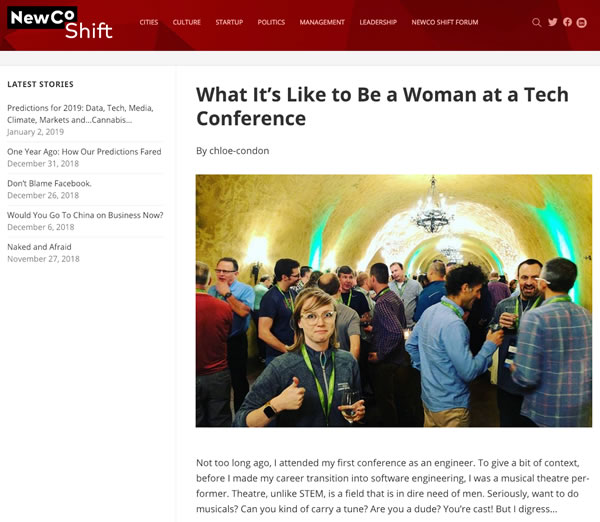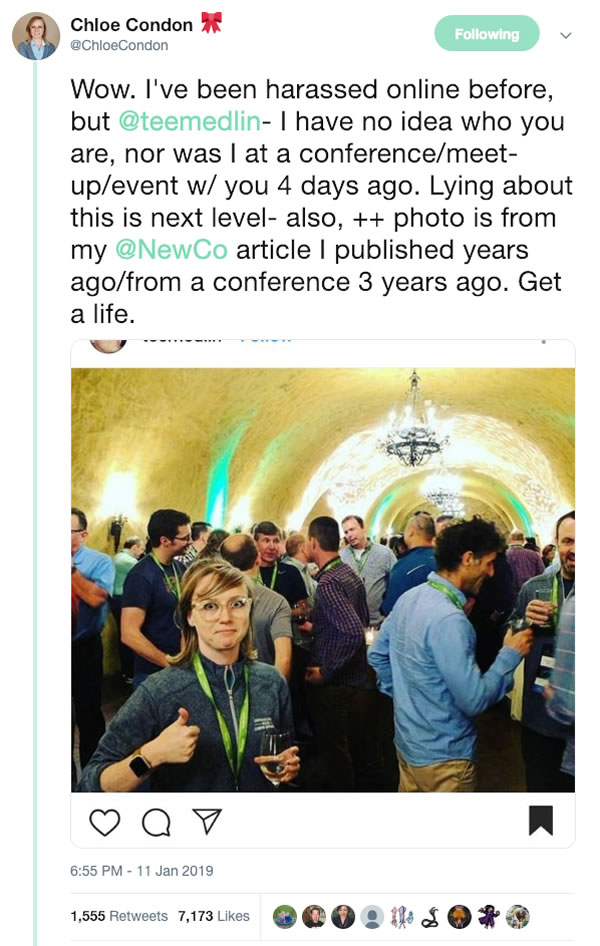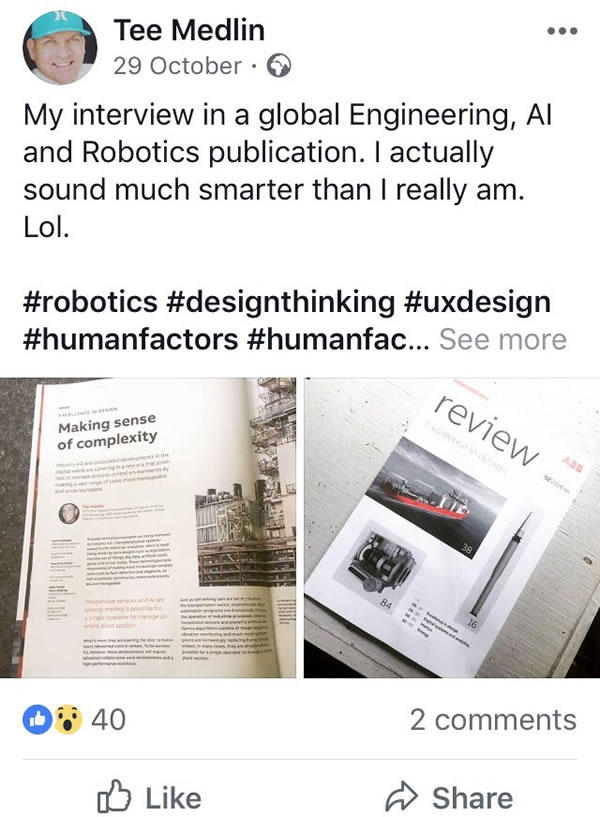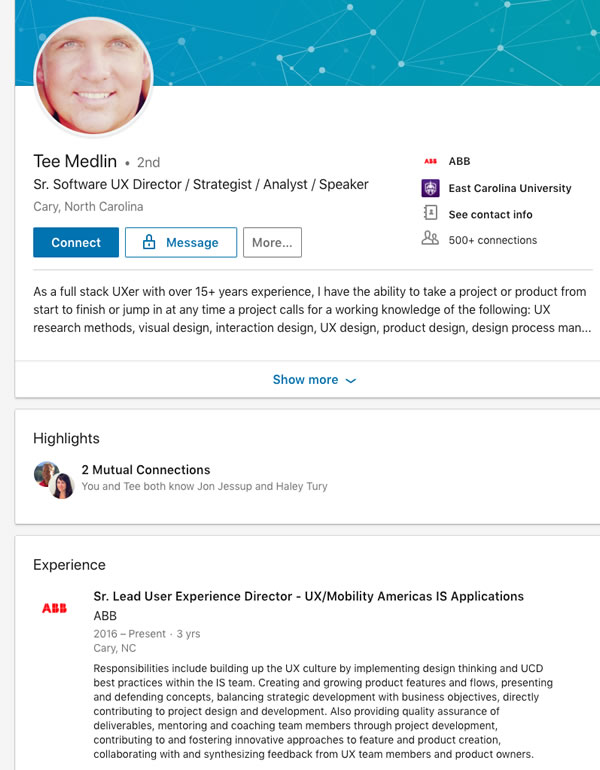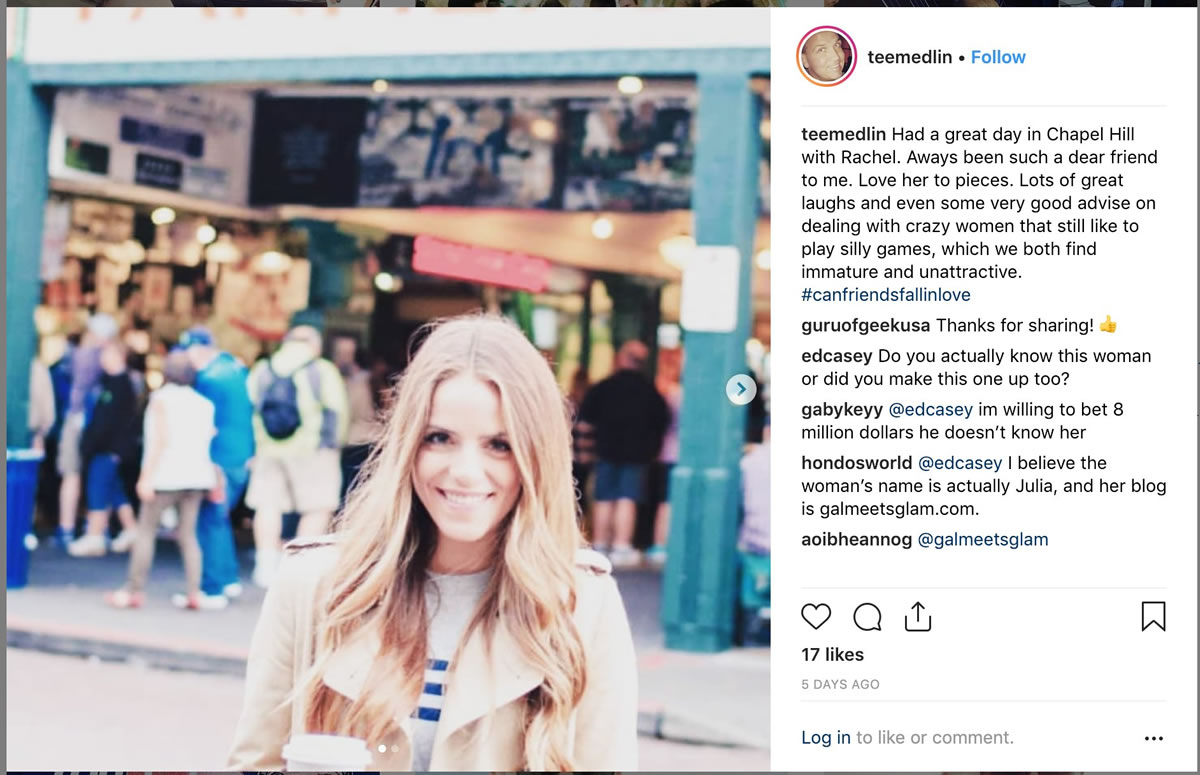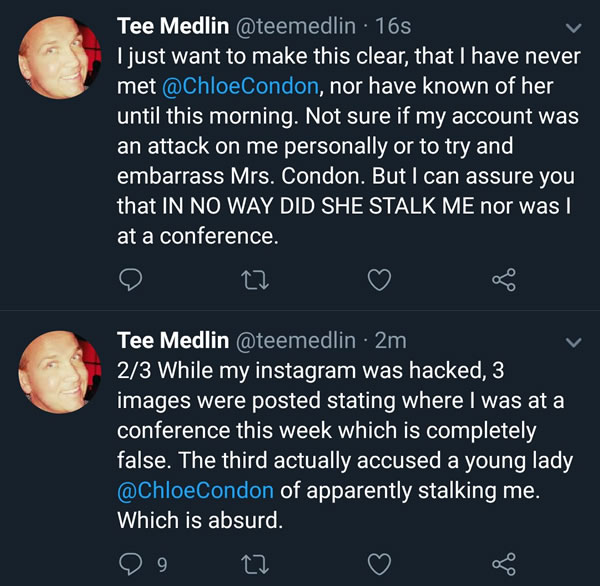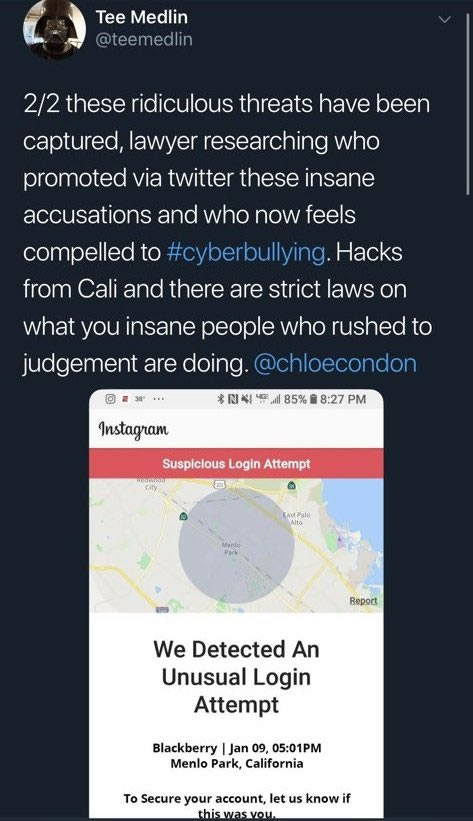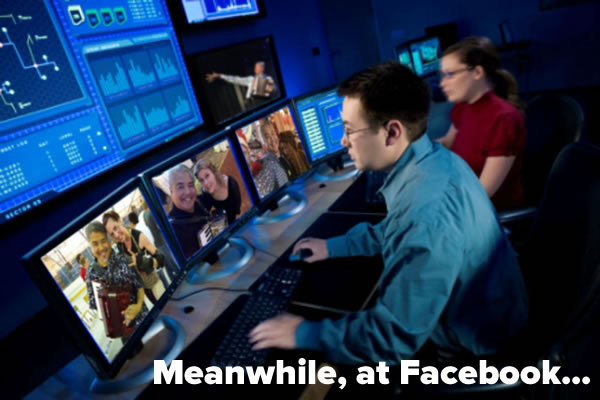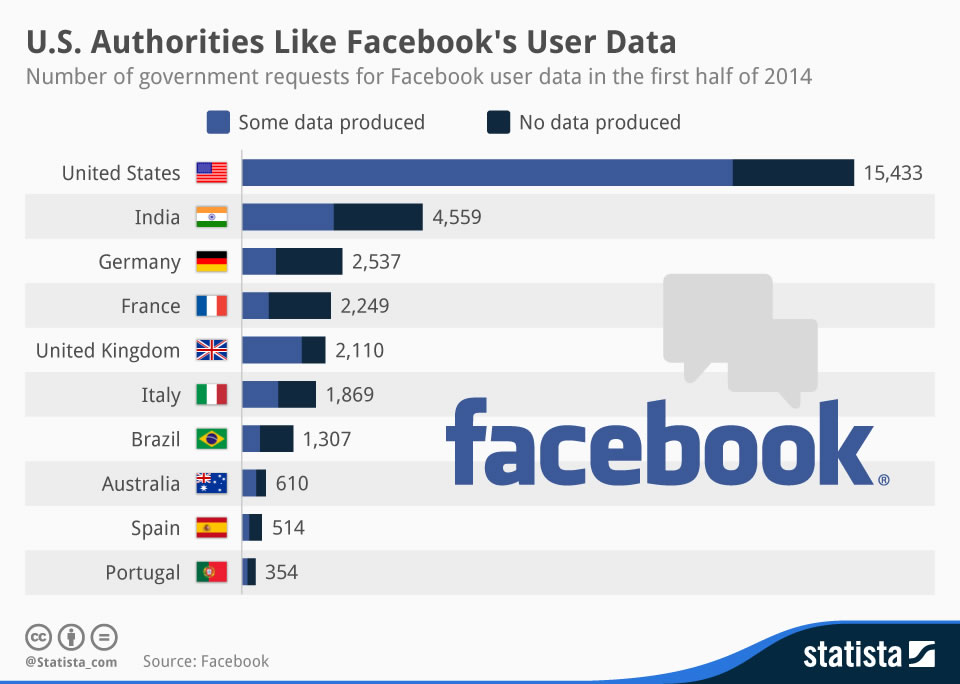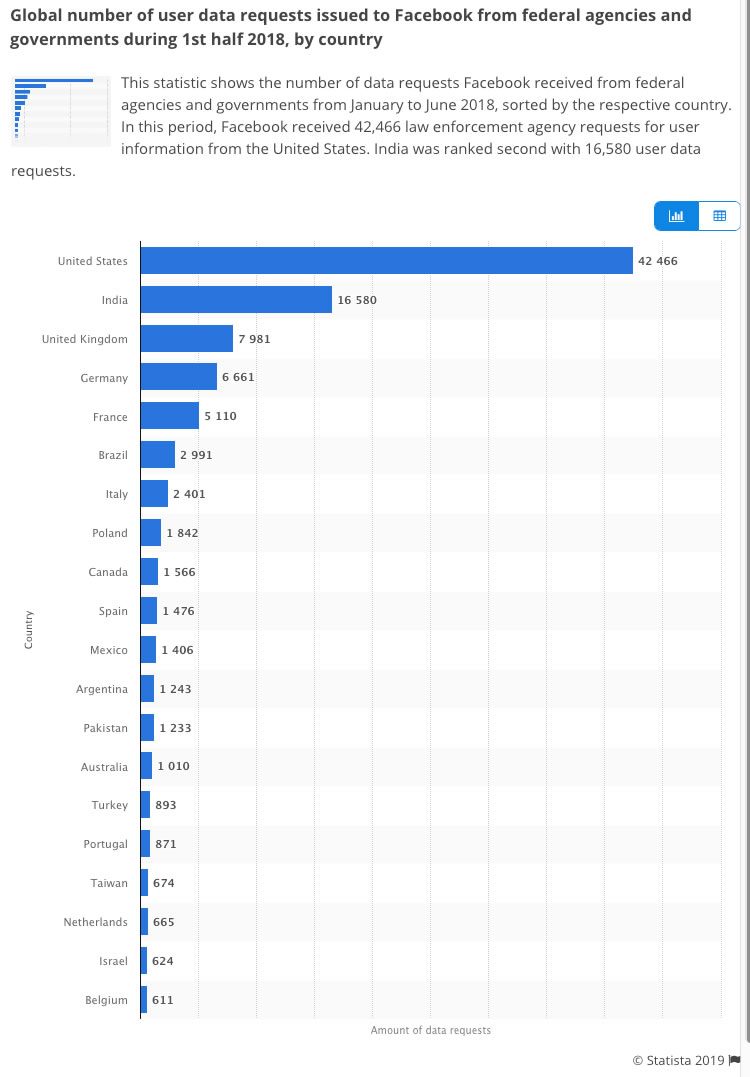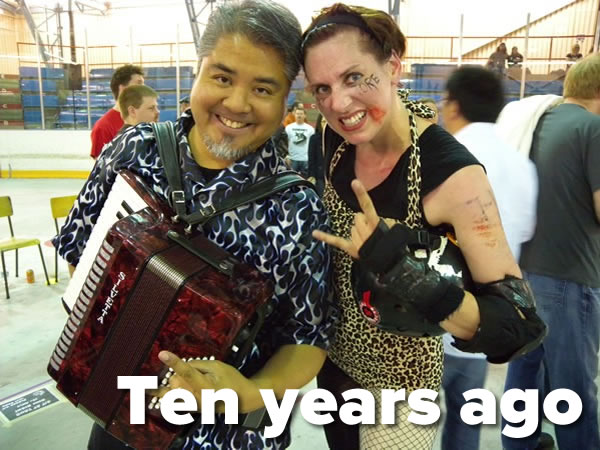Fakery is all the rage today, what with “fake news”, social media manipulation, and easily-researched lies being peddled as the truth on the institutional level. But it also happens on the individual level, as this strange story will show. This is a long one, but it’s a good one…
How it began
Some time around January 7th, 2019 a “Tee Medlin” posted a photo on Instagram humble-bragging that that a woman at a conference where he was speaking was stalking him:
The “stalker” in the photo — the sole woman in the foreground of the sausage fest — is Chloe Condon, a developer advocate at Microsoft (not all that dissimilar from my old job), and a friend of my friend Andrew Burke.
More importantly, the photo is not Tee’s — it’s one that accompanied an article that Chloe had written two years earlier for NewCo Shift: What It’s Like to Be a Woman at a Tech Conference. Go and read it, especially if you’re a guy in the tech industry.
Chloe’s response on Twitter was reasonable and measured:
The first step on a trail of fakery: pretending to write in a tech journal
Chloe’s tech advocacy game is strong, and as a result, she’s got serious social capital and no small number of followers on Twitter. They started doing some detective work and found some very oddly inconsistent things about Tee Medlin.
For starters, consider this article from the 1Q 2018 edition of ABB Review, a technical journal published by ABB, an electrical/electronics manufacturing company headquartered in Switzerland, Making Sense of Complexity…

…and then take note of this photo posted by Tee Medlin on Instagram and found by John Pettit. He Photoshopped himself into the article as the author:
Click the photo to see Tee Medlin’s fakery at full size.
Tee also claimed to be the article’s author in Facebook, as pointed out in this Tweet:
Possibly fake employment
Oddly enough, on LinkedIn, Tee lists ABB as his current place on employment:
It would be an incredibly ballsy and career-limiting move take credit for one’s coworkers’ work in online forums. However, it’s unlikely that he works at ABB, based on the email address that he gives out as his work one:
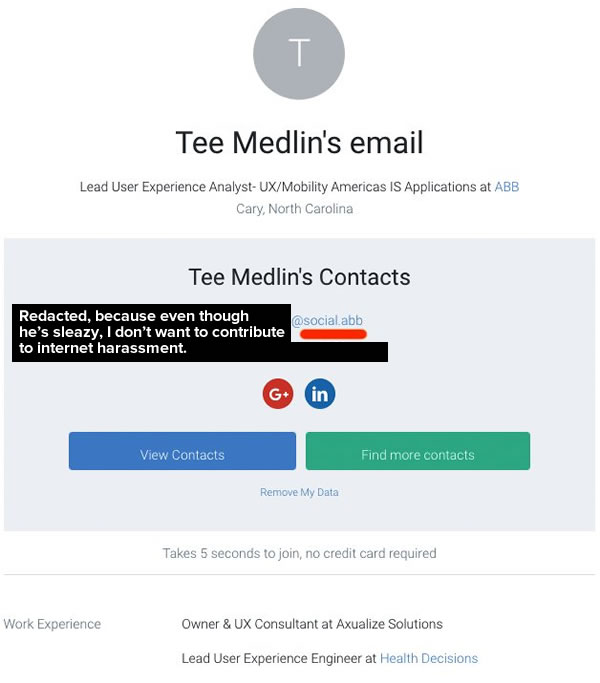
Take a look at the domain part of the email address: social.abb, not abb.com or even social.abb.com. Anyone can register an .abb domain, and if you go to social.abb, you’re taken to a page that tells you that social.abb is a branded short domain. It’s a domain that anyone could’ve registered, including Tee Medlin.
A fake speaker gig
Here’s another Instagram photo found by Tim Yocum in which Tee claims to be the next speaker at an event…
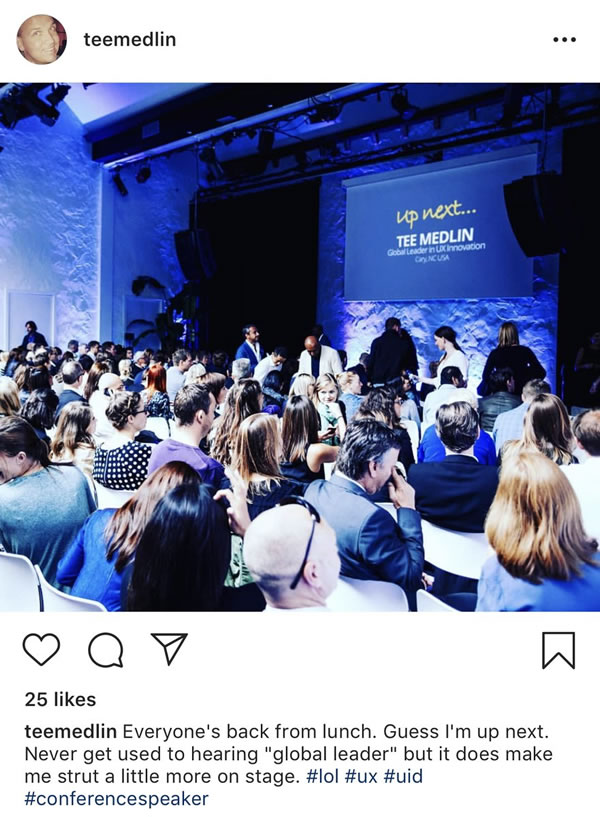
…and here’s a disturbingly similar photo, in which it’s a Calvin Klein event that Tee has nothing to do with:

Do some Googling, and see if you can find any conference where Tee is listed as a speaker. I’ll wait…
Here’s a tweet in which he says that he was excited to speak at the UXPA 2018 user experience conference in Puerto Rico…

If you go to the UXPA 2018 conference program, you’ll see that Dr. Lallemand was scheduled to speak. Tee’s name appears nowhere in the schedule.
Tee also claimed to be a speaker at another user experience conference — UXLX 2018, in Lisbon:

If you look closely at the illustration he posted, you’ll see that the name associated with the talk is Kim Goodwin. If you look at the UXLX 2018 program, you’ll see her name. Guess whose name you don’t see!
One last tweet:
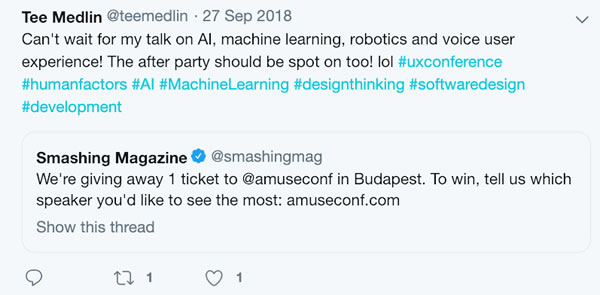
The archived list of speakers for AmuseConf 2018 isn’t complete, but come on — do you think he actually spoke there? (I know one of the speakers, Jon Crowley, and can always check with him.)
A gratitude post featuring a fake accident
Here’s a Facebook post in which Tee writes about how an accident turned out to be a lucky break. Supposedly, if it weren’t for the medical check he had after surviving a car wreck, his brain tumor would’ve never been discovered and removed. The post got 327 “likes” and 85 comments:

The photo is eerily similar to a news story on a car wreck posted three years earlier:
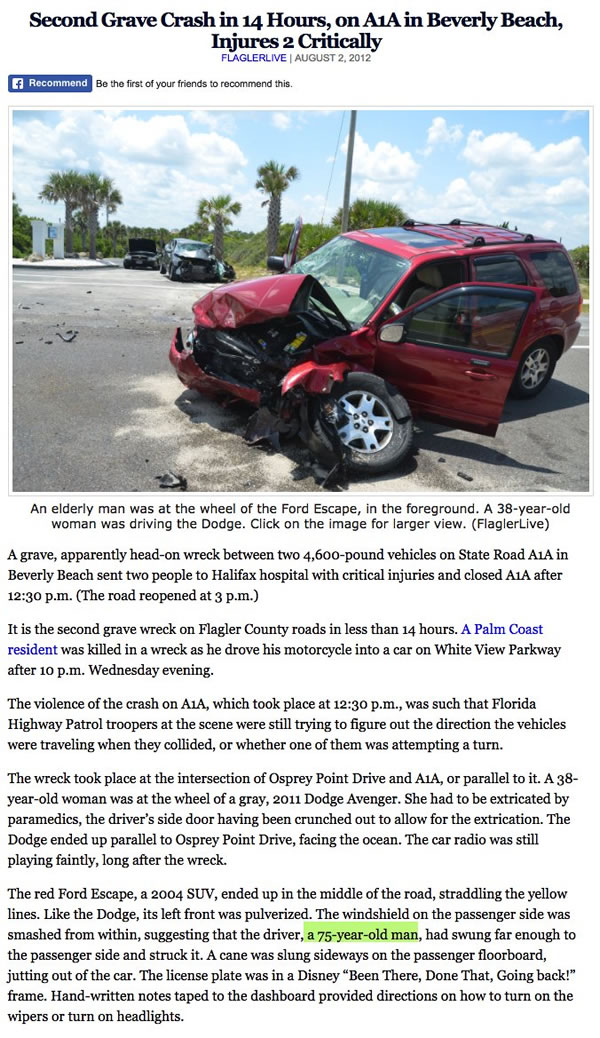
Unlike Tee’s photos, the news story photo doesn’t have the Florida palm trees cropped out.
Photo plagiarism
The car accident photo isn’t Tee’s only fake-gratitude post. Here’s another Facebook gem of his:

That photo was yanked from 500px — here’s the original.
Photoshoppery
Sometimes Tee’s more original with his photo fabrications. Consider a couple of Facebook posts found by Twitter user @nicolewashere84 — first, this:

…and then, this:
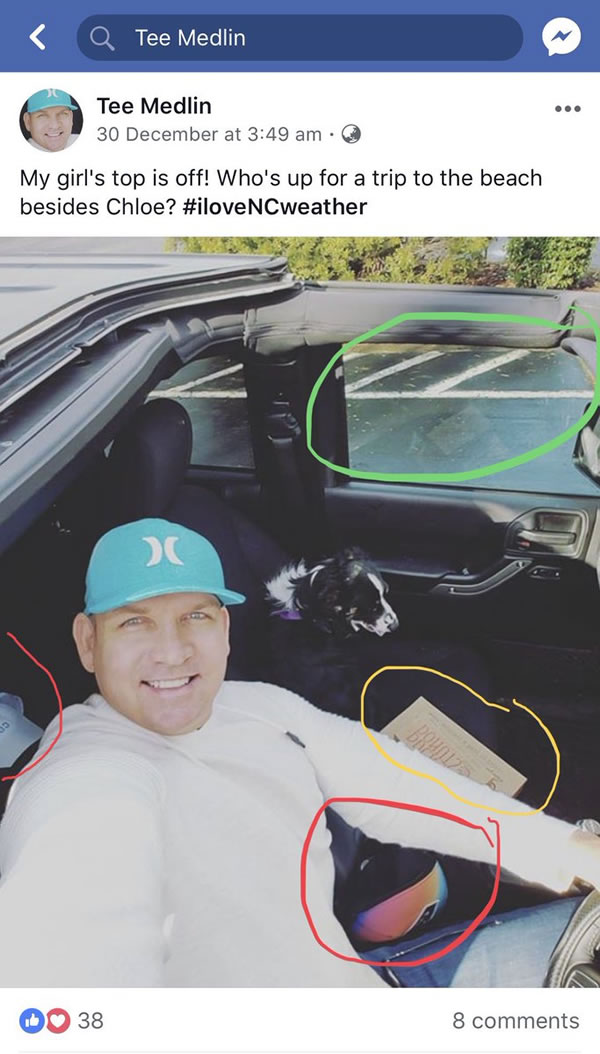
The posts purport to cover the span of a couple of days, but they feature the same sweater, helmet in the car, box of donuts, and background ground debris. The “differences” that are supposed to suggest that a day or two has passed are the horizontal image-flipping (notice that Tee is suddenly driving a right-hand-drive car and the text “Donuts” on the box is flipped) and an apparently Photoshop-assisted change to the baseball cap.
Tee’s fake beautiful women friends
Tee is clearly of the belief that nothing improves social standing like having beautiful women friends. Consider this post of his:
Here’s a suspiciously similar photo:

Here’s what Tee wrote as the caption for the photo:
Had a great day in Chapel Hill with Rachel. Always been such a dear friend to me. Love her to pieces. Lots of great laughs and very good advise [sic] on dealing with crazy women that still like to play silly game, which we both find immature and unattractive. #canfriendsfallinlove
He really, really loves Rachel. So much that he’s at a loss for words and simply has to repeat them:
In case you were wondering, “Rachel” is actually Julia Engel, founder of the beauty/fashion blog Gal Meets Glam. And I’m will to bet good money that Tee’s never met her, never mind had heart-to-heart conversations with her.
Tee’s fake girlfriend
How about one more “I know beautiful women, please think highly of me” humblebrag post?
These are actually stills from a Shutterstock stock video series:


Tee’s fake celebrity friend
And finally, here’s a shot where Tee claims to have met actor/comedian/writer/producer Seth Rogen at a charity gold tournament:
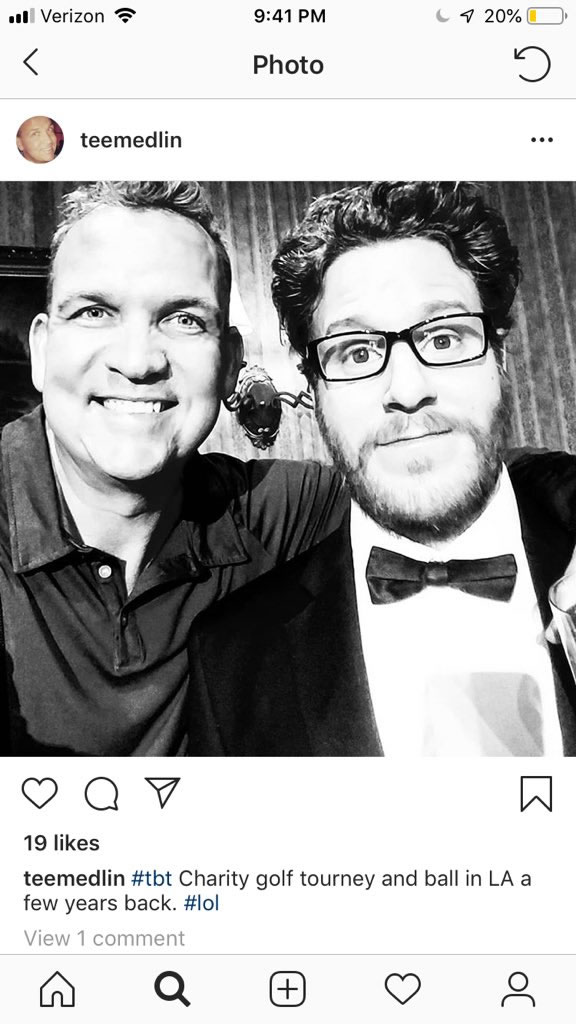
By now, you’ve probably guessed that this is fake. You’re right — but it’s a spectacular one. You see, he’s posing with a Seth Rogen statue at Hollywood Wax Museum. You can see that the lighting fixture and wallpaper are the same in both photos. The black-and-white treatment in Tee’s photos were meant to cover up any unrealism in the statue:

Here’s another photo of the statue, as submitted by “Brittany T.” to Yelp:
This dude is nuts.
— Seth Rogen (@Sethrogen) January 12, 2019
Tee responds
Upon being found out, Tee went into full damage control mode…
…and then into “I’m the REAL victim here!” mode shortly afterward:
Finally, he went into “hide” mode and closed access to his social media accounts.
In the meantime…
Chloe has gone to the police to report the incident. This is a sensible move, considering:
- The strange, pathological lengths that Tee went to in constructing his public profile,
- and the (well-deserved) career-limiting damage that this incident will do.
Chloe also reported Tee’s post — the “this woman is stalking me; notify the cops if I go missing” post — to Instagram, and they replied in the “see no evil” manner that I’ve come to expect from Facebook:
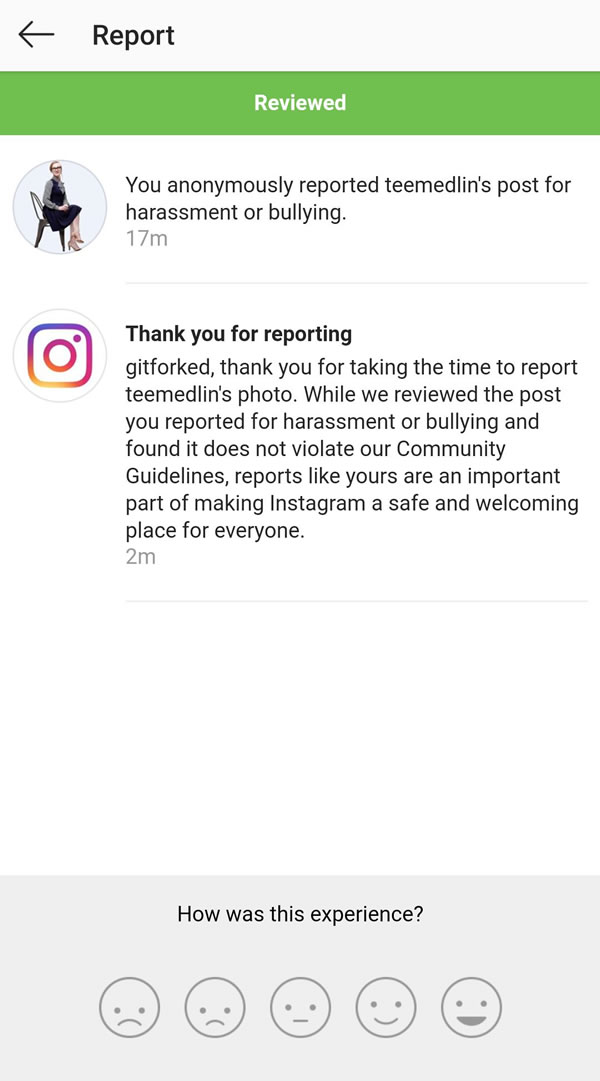
I’m beginning to truly understand the sentiment behind #DeleteFacebook.
There are lessons to be learned from this incident:
- From Tee: Social capital and connections can’t be faked — at least not in the long run. If you try it, sooner or later, you will be found out.
- From Chloe: Real social capital and connections are far more valuable than you think. Because Chloe is a great developer advocate with people and communications skills and considerable reach, she was able to inspire the community to act. The folks at Microsoft Azure’s advocacy program should realize what a powerhouse they’ve got in their midst.
- From Chloe’s following: Great things happen when people pull together. The Chloe Army showed us that people may have never even met, but have a common cause, can pull together and solve problems.
I’m putting this final one in big text, because it’s important and may get overlooked:
4. This one’s especially for men: Stop using women as props in your journey to success. A good portion of the lies cataloged in this article were about Tee trying to confer social status onto himself by pretending to be associated with attractive women. He claimed Chloe was stalking him, pretended that blogger Julia Engel was his friend “Rachel” (and hinted at the possibility of something more), and then there’s his Shutterstock girlfriend. To him, these women weren’t people, but mere accoutrements in a quest to validate what are likely a sorry career and a sad life. It’s a habit that a lot of men have and one that they need to break. It’s not manly, it’s childish.
Chloe, you handled this like a champ, and you’re going to come out of this even better. I salute you with a filet mignon on a flaming sword!
Recommended reading
Be sure the read the Twitter thread where it all happened:
Wow. I’ve been harassed online before, but @teemedlin– I have no idea who you are, nor was I at a conference/meet-up/event w/ you 4 days ago. Lying about this is next level- also, ++ photo is from my @NewCo article I published years ago/from a conference 3 years ago. Get a life. pic.twitter.com/tk3Vc2zhLX
— Chloe Condon 🎀 (@ChloeCondon) January 11, 2019
Chloe’s written a blog post reflecting on what happened: What it’s like to be a woman on the internet.
Also worth checking out: Mashable’s coverage of the story.
